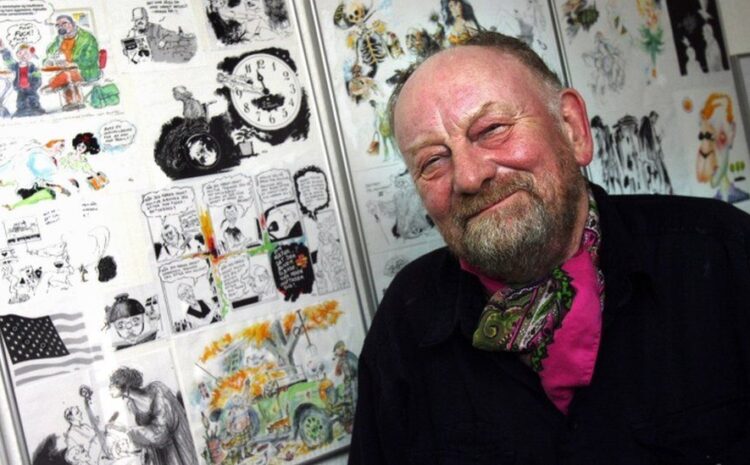
IMAGE COPYRIGHT EPA image caption Danish cartoonist Kurt Westergaard regularly received death threats after the publication of the cartoon in 2005
He died after a long illness, his family told the Berlingske newspaper on Sunday.
Westergaard was a cartoonist for the conservative Jyllands-Posten newspaper from the early 1980s.
He became world famous in 2005 for his controversial image of the Prophet Muhammad in the newspaper.
He was behind the most controversial one of 12 cartoons published by the newspaper to make a point about self-censorship and criticism of Islam. It showed the prophet wearing a turban in the shape of a bomb.
Images of the Prophet Muhammad are taboo in Islamic tradition and many Muslims considered the cartoons extremely and deliberately offensive.
The publication of the cartoons has left a lasting legacy. In 2015, 12 people were killed in an attack by Islamist militants on the offices of French satirical magazine Charlie Hebdo, which had published the cartoons.
In 2008, Danish authorities charged three people with planning to murder Westergaard. Two years later they caught a man armed with a knife breaking into his home. Mohamed Geele was later convicted of attempted murder and terrorism and was jailed for nine years.
In his later years, Westergaard had to live with a bodyguard at secret addresses.
Speaking to Reuters news agency in 2008, Westergaard said he had no regrets about his drawing.
“I would do it the same way (again) because I think that this cartoon crisis in a way is a catalyst which is intensifying the adaptation of Islam,” he said.
“We are discussing the two cultures, the two religions as never before and that is important.”
